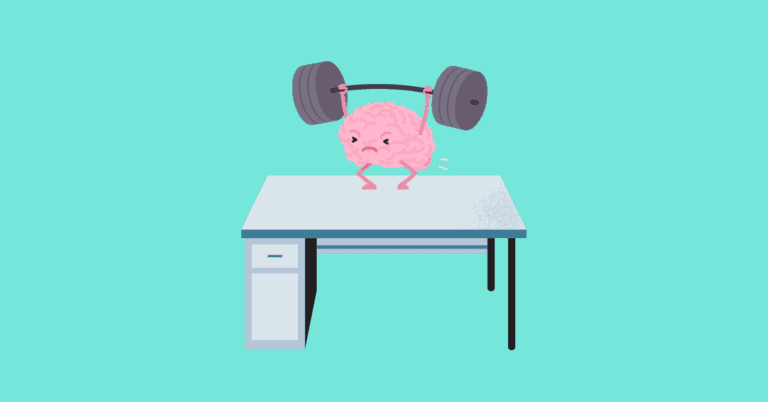OT VS PT: What is the difference between OT and PT
Did you know that occupational therapy (OT) and physical therapy (PT) are distinct healthcare professions? While both aim to improve a person’s quality of life, they do so through different approaches. In distinguishing between OT and PT, it helps to note the different scoped outlined by OT focuses on helping individuals regain independence in daily activities, such as dressing, cooking, and driving. On the other hand, PT primarily concentrates on restoring physical function, such as improving mobility and strength. Understanding the differences between OT and PT is crucial for choosing the right career path or seeking appropriate treatment.
Key Differences: OT VS PT
Occupational therapy and physical therapy are both professions that aim to improve patient well-being, but they have distinct focuses and approaches. Similarly, a physical therapist assistant differs from occupational therapy assistant.
Functional Limitations vs Physical Impairments
While occupational therapy primarily addresses functional limitations caused by injury or illness, physical therapy focuses on physical impairments. OT aims to enhance cognitive, sensory, and fine motor skills required for everyday tasks through therapeutic activities. On the other hand, PT employs exercises to restore mobility and strength.
Goals and Outcomes
The goals of OT often include promoting independence in self-care activities, work-related tasks, and leisure pursuits. The focus is on enabling individuals to perform these tasks despite their limitations or disabilities. In contrast, PT aims to improve movement patterns, reduce pain, and enhance physical performance.
Collaboration and Complex Needs
Collaboration between occupational therapists (OTs) and physical therapists (PTs) is common when treating patients with complex needs. They work together to provide a comprehensive approach that addresses both functional limitations and physical impairments.
Education Pathways: Requirements and Programs
To become an occupational therapist (OT), you’ll need to complete a master’s degree program accredited by the Accreditation Council for Occupational Therapy Education (ACOTE). This advanced education equips you with the knowledge and skills necessary to provide effective therapy services to individuals in need. On the other hand, physical therapists (PTs) typically require a Doctor of Physical Therapy (DPT) degree from a program accredited by the Commission on Accreditation in Physical Therapy Education (CAPTE).
Both professions share similarities in terms of educational requirements. They both require passing national exams for licensure (registered occupational therapist exam and national physical therapy examination, respectively) . These exams ensure that OTs and PTs possess the necessary knowledge and competence to practice safely and effectively. Once licensed, additional certifications or specializations can be pursued to further enhance your expertise and expand your career opportunities.
Occupational therapy focuses on helping individuals regain independence and improve their ability to perform daily activities. Occupational therapists work with people of all ages who have physical, cognitive, or mental health conditions that affect their ability to engage in meaningful occupations. They assess their patients’ needs, develop personalized treatment plans, and help them overcome challenges in various aspects of their lives.
Physical therapy, on the other hand, primarily focuses on rehabilitation through movement and exercise. PTs help individuals recover from injuries or surgeries, manage pain, improve mobility, restore function, and prevent further disability. They may work with patients who have musculoskeletal issues such as back pain or those recovering from stroke or sports-related injuries.
Job Roles: What Does a PT Do?
Physical therapists, often referred to as PTs, play a crucial role in diagnosing and treating conditions related to movement dysfunction. Through patient evaluations, a licensed physical therapist identifies the underlying issues and develops personalized treatment plans catered to each individual’s needs. The American Physical Therapy Association (APTA) serves as a valuable resource for PTs, offering professional development opportunities, clinical guidelines, and advocacy support.
PTs utilize various techniques and modalities to help their patients regain mobility and function. These may include exercises, manual therapy techniques, electrical stimulation, or other therapeutic interventions. By employing these strategies, PTs aim to alleviate pain, improve strength and flexibility, and enhance overall physical well-being.
In addition to providing hands-on treatment, PTs also take on an educational role. They educate patients about injury prevention strategies and provide guidance for managing chronic conditions that affect mobility. By empowering individuals with knowledge about their condition and self-care techniques, PTs enable them to take an active role in their own recovery process.
Rehabilitation is a primary area where PTs excel. Whether it’s helping someone recover from a sports injury or assisting an individual after surgery, physical therapists are skilled at guiding patients through the rehabilitation process. They focus on restoring functionality and improving quality of life by addressing impairments caused by injuries or surgeries.
Pain management is another aspect of a PT’s job responsibilities. They employ various methods such as therapeutic exercises, manual therapy techniques, and modalities like heat or cold therapy to reduce pain levels and improve overall comfort.
By playing a vital role in post-surgical recovery programs, physical therapists assist patients in regaining strength and mobility after undergoing surgical procedures. They work closely with surgeons to ensure optimal outcomes for individuals who have undergone joint replacements or other orthopedic surgeries.
Job Roles: What Does an OT Do?
Occupational therapists, commonly referred to as OTs, play a crucial role in helping individuals improve their daily functioning and overall quality of life. They assess clients’ physical, cognitive, and emotional abilities to determine their functional limitations. Based on these assessments, they develop personalized intervention plans aimed at enhancing clients’ independence and well-being.
Assessing Functional Limitations
OTs thoroughly evaluate their clients’ capabilities across various domains, including physical strength, coordination, problem-solving skills, and emotional well-being. By understanding the specific areas where individuals face challenges or limitations, OTs can tailor their interventions accordingly.
Developing Intervention Plans
Once the assessment is complete, OTs create intervention plans that are customized to meet the unique needs of each client. These plans may involve a range of strategies such as adaptive techniques, assistive devices, environmental modifications, or skill-building activities. The goal is to support individuals in overcoming barriers and maximizing their ability to engage in everyday activities.
Collaboration for Improved Functionality
Collaboration is key in occupational therapy practice. OTs work closely with their clients to set goals and establish a plan of action. They provide guidance and support throughout the therapeutic process while empowering individuals to take ownership of their own progress. By actively involving clients in decision-making and problem-solving, OTs foster a sense of empowerment and motivation.
Mental Health Support
In addition to physical rehabilitation settings, OTs also play a vital role in mental health settings. They assist individuals with psychiatric conditions in regaining independence in daily living skills. This may include tasks such as managing personal hygiene routines effectively or utilizing coping mechanisms for stress management.
Occupational therapy assistants (OTAs) also contribute significantly to this field by working under the supervision of OTs. They provide hands-on assistance during therapy sessions and help implement intervention plans.
Salary and Job Outlook Comparison
According to the Bureau of Labor Statistics (BLS), occupational therapists earned a median annual wage of $86,280 in May 2020. On the other hand, physical therapists had a slightly higher median annual wage of $91,010 during the same period. Both professions offer attractive salaries that can provide a comfortable living.
The job outlook for both occupational therapy and physical therapy is promising. With an aging population and increased demand for rehabilitation services, there is a growing need for professionals in these fields. The BLS projects a 16% growth rate for occupational therapy jobs from 2019 to 2029, which is much faster than the average for all occupations. Similarly, physical therapy jobs are expected to grow by 18% during the same period.
Here’s a breakdown of the salary and job outlook comparison between occupational therapy (OT) and physical therapy (PT):
- Median Annual Wage:
- OT: $86,280
- PT: $91,010
- Job Growth Rate (2019-2029):
- OT: 16%
- PT: 18%
Both occupational and physical therapy offer rewarding career paths with competitive salaries. While PT has a slightly higher median wage, both professions have favorable job prospects due to increasing demand in healthcare settings.
It’s important to note that these figures represent national averages and may vary depending on factors such as location, experience level, and specialization within each field. It’s worth considering factors beyond salary when choosing between OT and PT careers, such as personal interests, preferred work settings, and desired patient populations.
Choosing the Right Career Path
Congratulations! You have now gained a deeper understanding of the key differences between occupational therapy (OT) and physical therapy (PT). By exploring their education pathways, job roles, salary, and job outlook comparison, you are well-equipped to make an informed decision about your future career path.
Now that you know more about OT and PT, it’s time to reflect on your own interests, strengths, and goals. Consider which profession aligns best with your passion for helping others regain independence and improve their quality of life. Remember, becoming either an OT or PT requires dedication and hard work. But rest assured, whichever path you choose will offer rewarding opportunities to positively impact people’s lives.
FAQs
How long does it take to become an occupational therapist or physical therapist?
Becoming an occupational therapist typically takes around six years: four years of undergraduate study in a related field followed by two years of graduate-level education. On the other hand, becoming a physical therapist typically requires seven years: four years of undergraduate study followed by three years of doctoral-level education.
Can I specialize in a specific area within OT or PT?
Yes! Both occupational therapy and physical therapy offer various specializations such as pediatrics, geriatrics, sports rehabilitation, neurology, orthopedics, and mental health. Specializing allows you to focus on specific patient populations or conditions that interest you most.
Are there any similarities between OT and PT?
While there are distinct differences between OT and PT, both professions share some similarities. They both require strong interpersonal skills, a passion for helping others improve their well-being through therapeutic interventions, and the ability to work collaboratively with healthcare teams.
What is the earning potential for OTs and PTs?
The earning potential for both professions is promising. According to the Bureau of Labor Statistics (BLS), the median annual wage for occupational therapists in 2020 was $86,280, while physical therapists earned a median annual wage of $91,010. However, it’s important to note that salaries can vary based on factors such as experience, location, and specialization.
Can I transition from OT to PT or vice versa?
While it is possible to transition between OT and PT with additional education and training, it is not a straightforward process. The two professions have distinct scopes of practice and require different educational backgrounds. If you are considering a transition, it is advisable to consult with academic advisors or professionals in both fields to determine the best path forward.





